by Richard Dorbin
So beloved was Tommy Macaione to his chosen hometown of Santa Fe, New Mexico, that after his death in 1992 a bronze statue of him painting en plein air was erected in a downtown park. When was the last time you saw a bronze statue of a plein air painter? Maybe one exists in Giverny, the Fontainebleau Forest, or possibly the Laguna coast, but I have not heard tell of one. What made this artist so worthy of a statue?
Through my eyes, as well as the eyes of my immediate family and much of Santa Fe, Tommy Macaione was one of the world’s most gifted painters. But as this author has matured as a painter and consumer of art, my perceptions transformed into a more critically sophisticated reality. I am emotionally attached to my earlier perceptions, but my head tells another story: Tommy’s story.
Born in 1907 in New London, Connecticut, to Italian immigrant parents, Tommy was raised in Connecticut and for a period lived in his parents’ native Sicily. Before WWII he had returned to New London and started to receive art instruction from local artist Frank Zozzora. Tommy studied at the Rhode Island School of Design from 1943-45 and served in the U.S. Army Signal Corps near the end of the war.
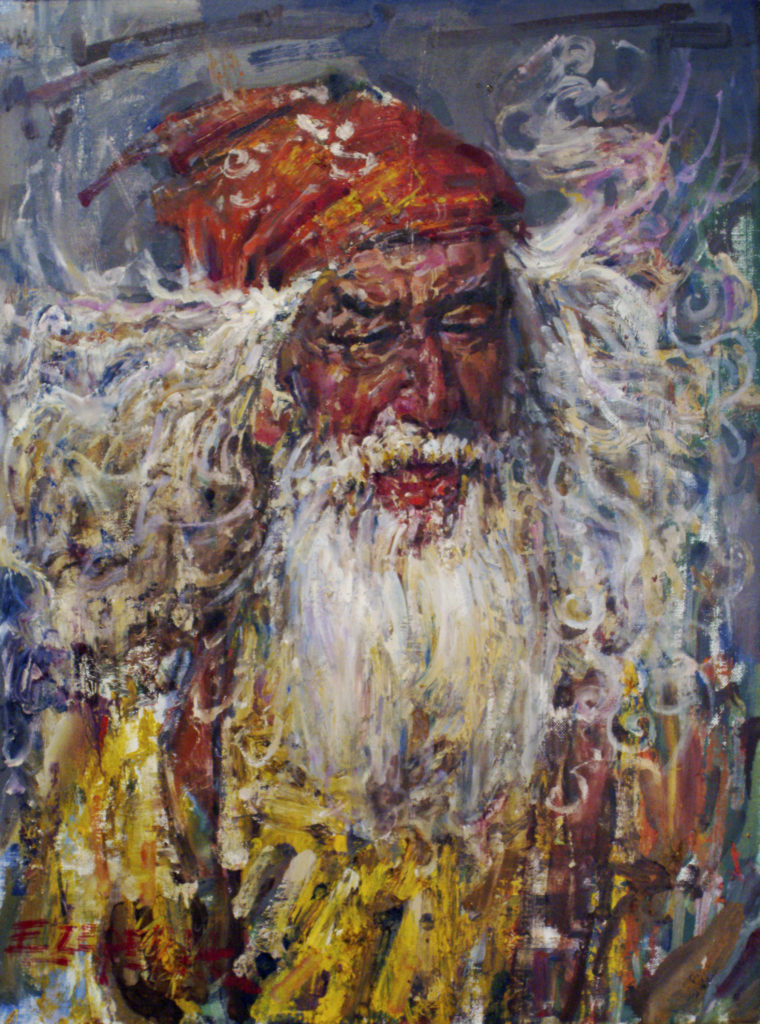
After his tour in the army, fortunes led Tommy to the Southwest and eventually, in 1952, to Santa Fe. Inspired and convinced that he, too, could be a professional artist, Macaione stepped into the professional art scene in Santa Fe. He studied with Alfred Morang and cited influences Maurice de Vlaminck and Nicolai Fechin, as well as the general tradition of the Ashcan School. He then became part of the art community that was known as the “Canyon Roaders,” including Morang, Gerald Cassidy, Randall Davey, and Hal West.
His work is immediately recognizable by bold fauvist color usage and heavy, copious amounts of paint applied with brush as well as palette knife; the knife work was sculpting and blending, not much scraping. His subjects and motifs, both plein air and studio, were of his surrounding city, now famous for its ubiquitous art galleries and artisans. (Santa Fe boasts that it is currently the third-largest art market in the U.S., behind New York and Los Angeles.) Macaione’s subjects ranged from architectural to floral studies, supported by New Mexico’s distinctive warm adobe walls and cobalt blue skies — now broadly painted by many a resident and itinerant artist.
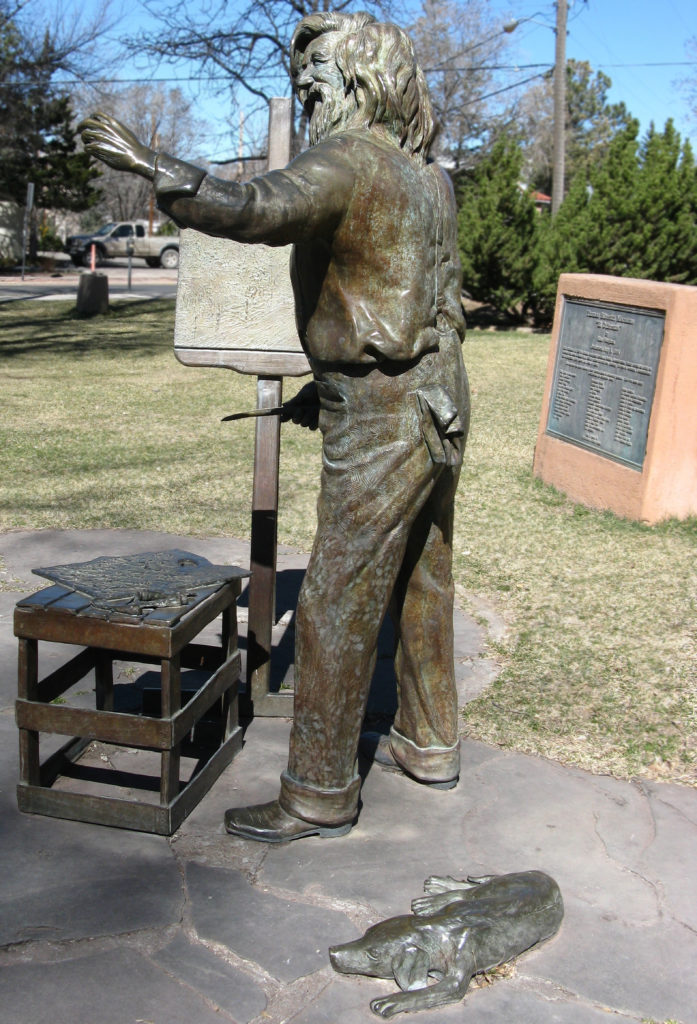
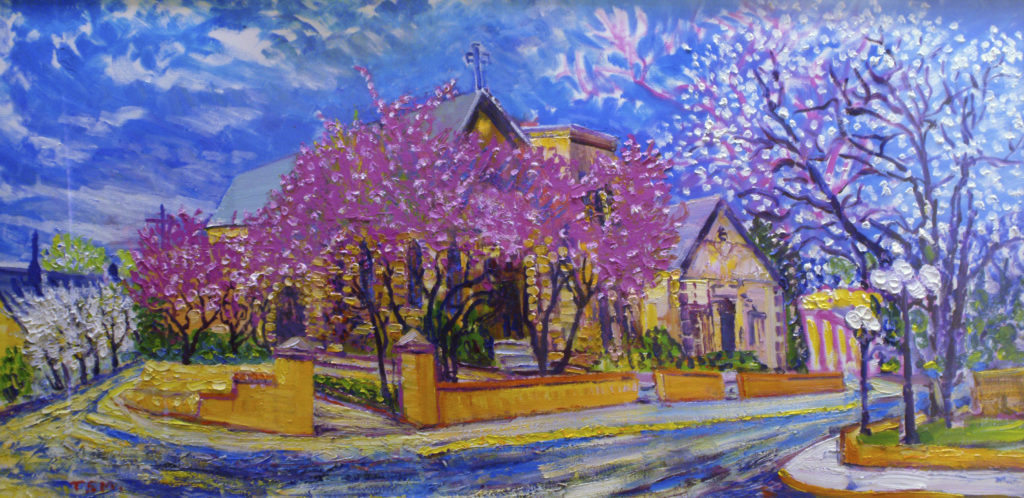
This author (and painter) was fortunate to grow up in the 1960s in the neighborhood where Tommy painted and lived. I count myself more than fortunate to have been raised among the centuries-old back streets where Tommy and other artists were part of the everyday landscape. Though I never heard the term “plein air” until adulthood, I figured painters painting out-of-doors were just artists, plying their trade. To me, being an artist was as legitimate a career as being, as were my parents, a librarian or a stock broker.
I have vivid memories of helping Tommy carry his painting supplies and watching him paint. My father recounts times in the early 1960s that my older sister and I would pass him swigs of water through the window to our front yard, where Tommy had happened to choose a view to paint at our house on the Camino Del Monte Sol. His kit was basic, never evolving from a rudimentary wooden tripod with heavy C-clamps to attach his canvases (at times he worked on multiple canvases) and a handheld palette. As he aged, he conceded to use his palette on a small crate or improvised TV tray.
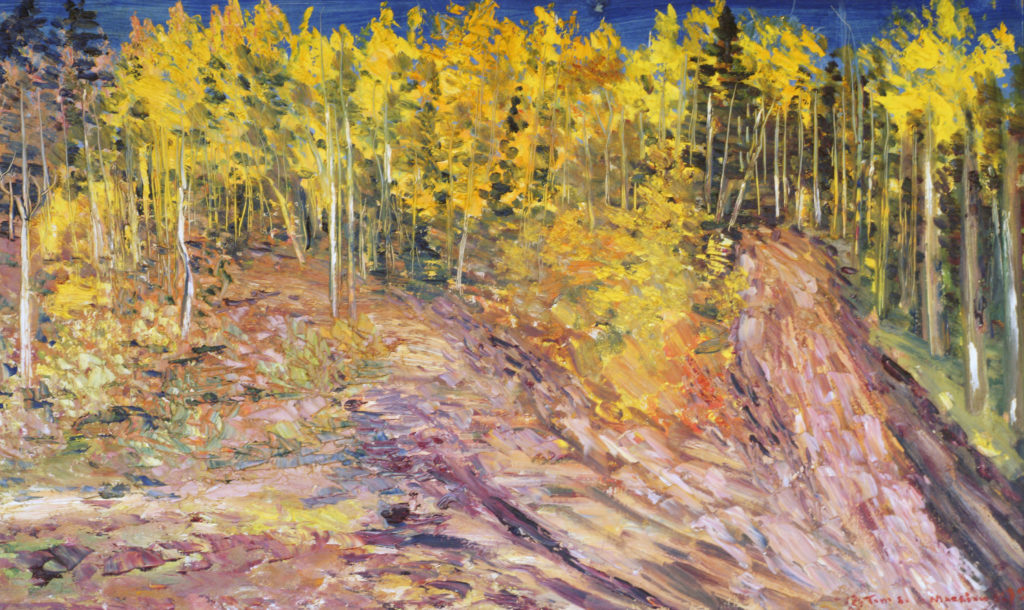
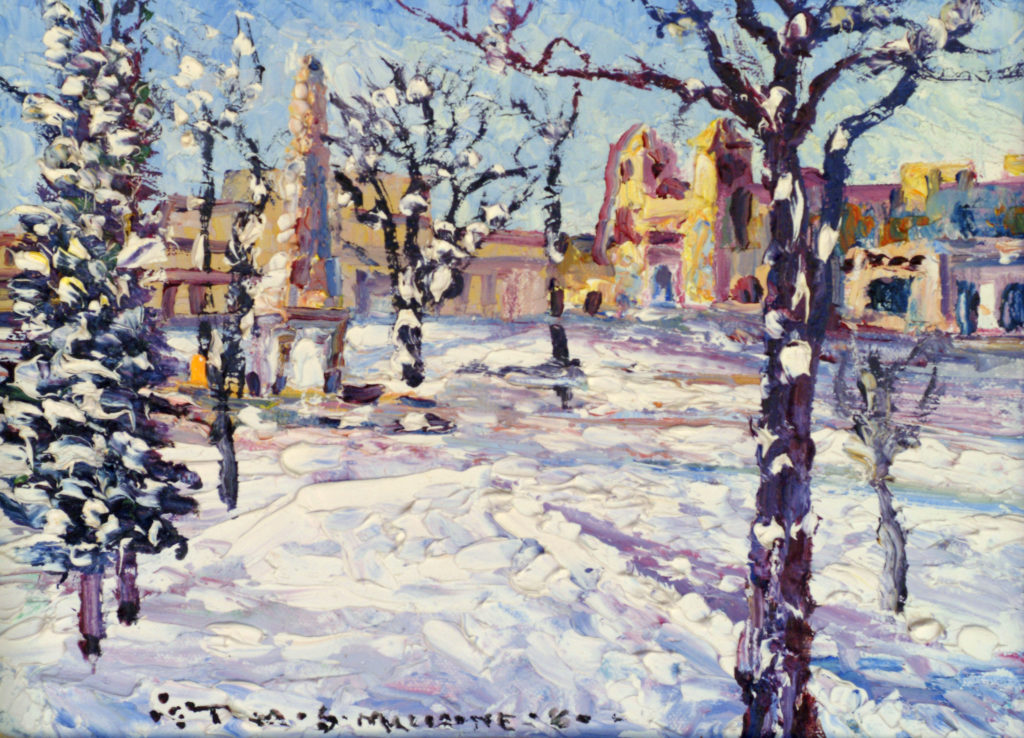
Tommy was what one might call “a character.” He was cherished, but stood out as well as made himself all the more famous (and notorious) in Santa Fe through his personality, not just his painting. Even among the 1960s and 1970s hippie counterculture that flourished in the city, Tommy was an outspoken, flamboyant, free-spirited, and earthy eccentric. It was as though he had stepped out of a Hollywood movie set, cast as the wild-haired cliché of what one would have conjured up as the quintessential Bohemian “artiste.” Tommy implored passers-by, in his raspy broken English, to behold the abject beauty right before their eyes. His passionate diatribes and rants are central to how he is remembered today.
There are scores of anecdotes that are still passed around as cherished lore among those who knew (or wished they knew) Tommy. Famous also for his ever-expanding brood of dogs, Tommy was protective and ever-inclusive of strays he might add to his family of “babies.” All of this was not without complaints (and legitimate concerns) from his nearest neighbors about the difficulty of living next to a compound of ambiguously cared-for pets. Tommy’s advocacy for these animals — as well as outbursts during City Council meetings — landed him in jail for contempt more than once.
Tommy’s rants against the failings of city government went beyond concern for his dogs. His stays in the clink, however, were usually brief, as most times the city police would release him early the morning after his arrest because neither the police nor the other prisoners could bear more than a few hours of his non-stop complaining and protesting about the injustices served upon him.
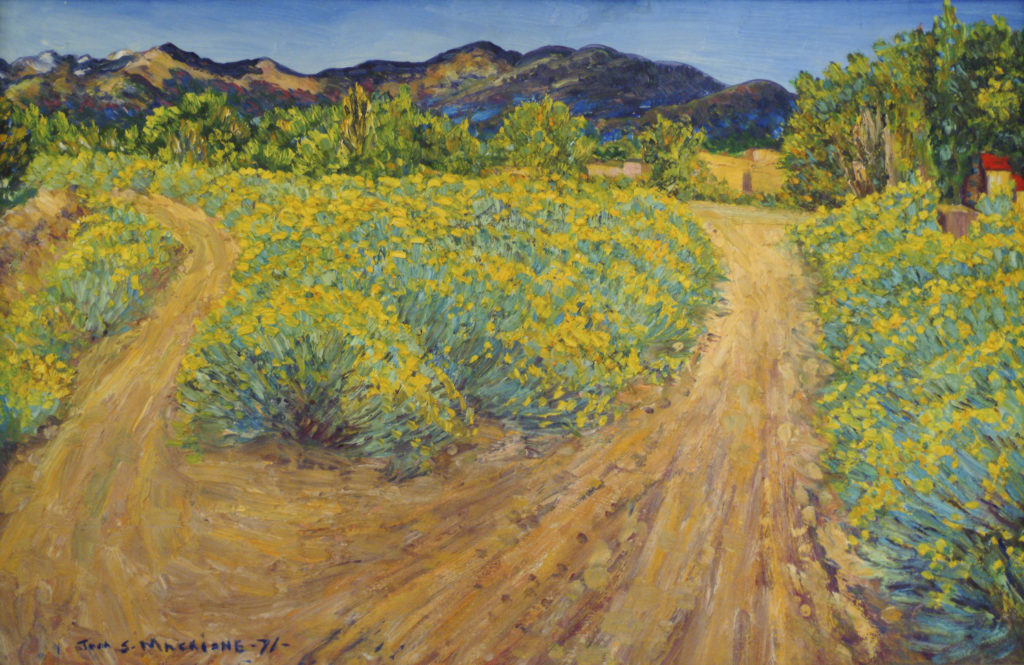
As a full-throttle idealist, he ran for mayor, for City Council, House of Representatives, Senate, and for governor (where, in 1988, his platform involved the creation of a “Mutual Happiness Society”). And, yes, he ran for the White House (though not officially on any ballot). His everyday utopian attitude and ideals afforded him the duty and made him feel a need to run for public office.
In my personal memory when I was growing up, Tommy was ever entertaining, whether coming upon him painting as I walked home from school or hearing him rambling passionately on the local radio station, KTRC — which gave him a platform for his quixotic railings on issues as he ran for (but never achieved election to) office. No one doubted his sincerity in wanting to change the world for the better, but plenty of straitlaced folks certainly questioned his stability.
Macaione sold well enough to eke out a living in Santa Fe. (My father and siblings own several of his paintings, bought for between $35-$700 in the 1960s and ’70s.) Tommy also traded paintings for most of his needs, most famously to storekeepers for pet food and to a veterinarian for care of his dogs. He was even charismatic enough to be able to trade his paintings to a local art store to supply him with more paint and canvas.
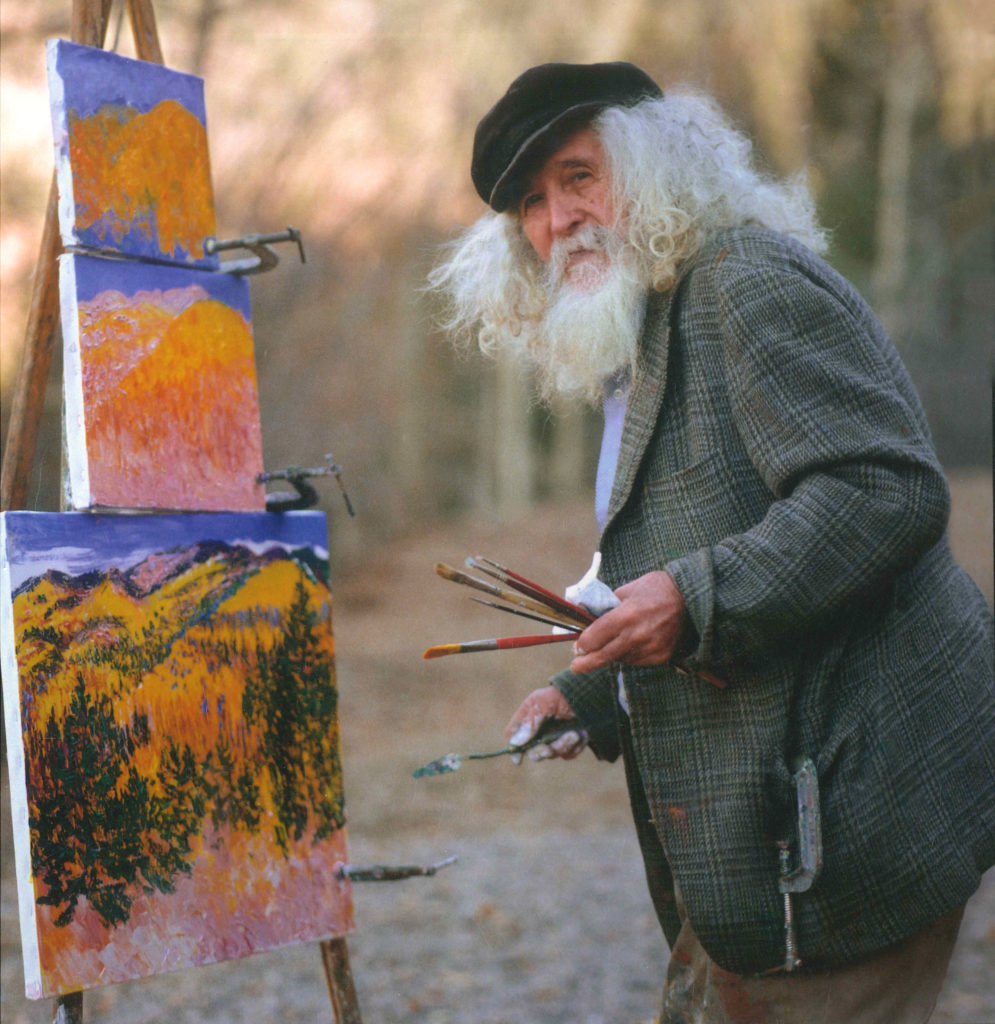
Working mostly in oils on Masonite and stretched canvas, Tommy marketed his pieces directly off the easel. But he also had a few flourishes of marketing bravado. Alongside I-25 between Santa Fe and Albuquerque, an advertising billboard proclaimed: “Messrs. Picasso, Monet, Van Gogh … Please step aside for Thomas Macaione, the new star of the art world firmament … Let him bask in the light of World Fame…” Though this was marketing was done with others who also stood to profit from the sale of paintings and a videocassette documentary on Tommy, it’s anybody’s guess how effective that swaggering approach was.
As I took up painting in my 40s and my own artistic skills evolved, so did my visual and aesthetic sensibilities. A bittersweet realization began to dawn: Tommy was not the master artist my heart and untrained eyes had believed and elevated him to be. My growth as a self-critical and objective artist soon made me aware of how strong a few of Tommy’s pieces were, as well as how undisciplined many clearly were. My newly educated vision recognized the drawing and perspective mistakes, the compositional flaws, the color imbalances, and that handling of the paint was often sloppy rather than “passionately applied impasto.”
It is indeed bittersweet to have this new perspective fall over my childhood reminiscences. At the same time, I have held fast to my appreciation for the human qualities Tommy possessed that garnered more than just accolades for painting chops. He was his own one self, living at full volume. The boldness and passion that Macaione displayed made him unforgettable.
In Milwaukee, my current home, I recently attended a local theatrical production of “Man of La Mancha” — and was immediately taken aback by the parallel between Don Quixote and Tommy. The play shines light on questions of reality vs. perception. Where does the line lay between zealous idealism and mental instability? Championing valorous actions, defying inglorious human cruelty, and seeing beauty where others are blind to it were hallmarks of Tommy and of Don Quixote. I found myself looking back at Tommy and seeing how the same questions and boundaries were asked, and lines blurred, by this passionate painter.
As part of the community of plein air artists today, my awareness of and appreciation of Tommy’s full complement of human traits is all the more present after looking at his life and his work. We all share many of those same qualities: favoring idealism, each with our own character traits and different visual voices. The courage that has us all stepping outside, ready to create, fail or succeed. We all step up and tilt at elusive self-contentment with our work; our own windmills. The fact that we do this makes us a community where we all may share in the true beauty and blurred lines that I now see in my and Tommy’s lives. I am ever more inspired to summon the courage to get out and paint more as well as live a life of creative consequence.
For me, more painting, a few more windmills, and an eye on leaving a legacy with a brush and without.
To learn more about Richard Dorbin, visit his webpage here. Instagram: Richarddorbin

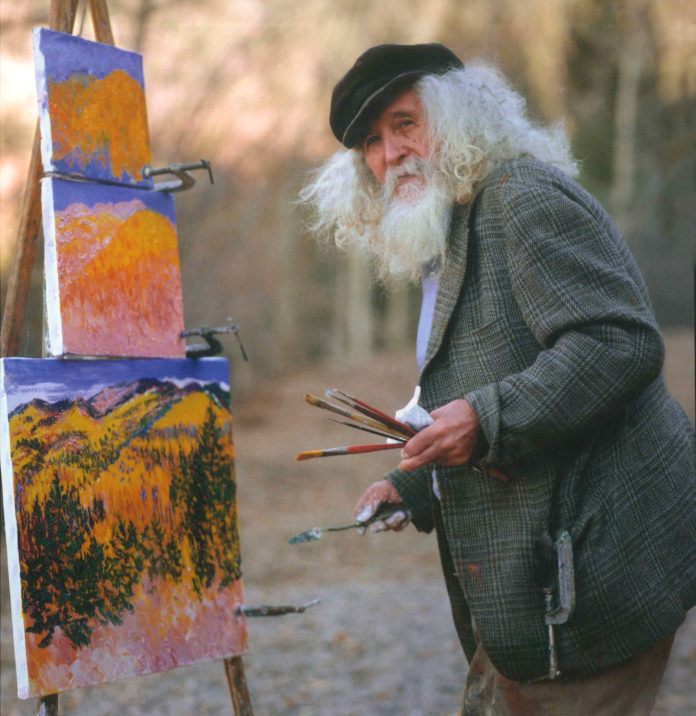
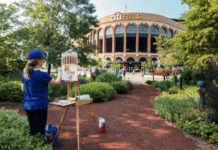


This is a really nice, well written story. Thanks for writing it!!
A wonderful article. I really enjoyed it. I love to read about people who are characters in life. It’s always interesting to me. Thank you
I remember Tommy from the late 60’s. He was a Santa Fe Icon even then. Most of us were just not aware of it at the time. We were teen agers going to St Mikes and SFHS when it was still down town. He always commanded our respect even as teenagers. One of the greats of Santa Fe. bGod Bless Sir.
I enjoyed your article. It made me wish I could have known Tommy.
Knew Tommy well and spoke with him in Italian and pretty sure he took in cats and once went to his house and it was full of stray cats. Liked him a lot and his voice was both very high and raspy at the same time.
Mac Vaughn was the sculptor and the force behind Tommy’s recognition in the park. He too needs to be recognized as a fine artist.
I met Tommy during his “run for the White House”. I was new to Santa Fe and took a job driving taxi.
Tommy would have me pick him up at his home, load all his painting supplies into the trunk, and drive him up Canyon Road.
Later, he asked me to drive him in Santa Fe’s Labor Day parade. With a large banner reading “Tommy for President” attached to the side of the taxi, we made our way through Santa Fe streets.
As he waved to people from the rear seat, he promised me that if he won the White House, I would be his White House chauffeur!
Mr. Dorbin, …searching a few of the N.M artist, during my very younger days, I came across your beautiful story on Tommy Macaione. I see you had lived somewhere around Canyon Road, as I did. 1960-2, Tommy was my neighbor 6-doors up Canyon Rd…till later he moved pretty well next house over on Canyon/Camino Del Sol..lol !! I was glued to him like a tick on a dog and followed him pretty well everywhere. One day he’d have a buddy pet, a donkey..next it would be a dog…and then more dogs. Tommy did a portrait of me, that was published in the front page of the New Mexico Times newspaper, 1960. I could tell a lot of beautiful stories about my times with Mr. Tomaso Macarione as a little 6-7 year old poor girl, always hungry, and never realizing, so was Tomaso, but never unselfish to share he’s little bag of artist food(1-peanut butter sandwich & 1-red apple or a can of tuna). I followed him everywhere just about…so I’m sure some of his art works, I was ‘right there’…as he brushed away with the sweet smell of oil paints. He was always so kind and spoke with a gentle voice, but yet made it “firm” if you were a distraction to his art work…lol. I saw Mr. Macaione one more time before he passed away, ‘he was working on a ‘master piece’…1987
Tommy left New London prior to the year I was born, 1952 so I never actually met him. I do remember him speaking on the phone to both my mother and father and on some of those occasions he would also ask to speak to me. My father, Jim, was Tommy’s brother he also had another brother Morris and a sister Marie. We had a few of Tommy’s paintings in our house and every now and then another would show up in the mail as a gift to my parents and me. My parents were big supporters of Tommy and how he chose to his life. He sent along newspaper articles detailing his political aspirations and others relating to his art work which my mother always kept safely stored away. I have a signed copy of “Come With Me” which was a guide to Santa Fe and its various businesses published in 1961. In the January 27, 1962 issue of the Saturday Evening Post on a feature article about New Mexico there is a full page picture of Tommy painting a landscape. Since his death, almost thirty years ago, I have come to appreciate the talent and uniqueness of my uncle.
I lived in Santa Fe in the mid 80s and would see Tommy painting regularly I enjoyed his presence.he always have me his attention and would make me feel better about the day.he definitely was a inspiration and a eccentric at the same time R.I.P Tommy
In the 1050s, Tommy stayed in a hotel downtown. In his early life, he had been a barber and I used to go to his hotel room for a haircut; quite illegally, I’m sure. I still have a painting of his hanging in my condo in Japan, along with several paintings by Chuzo Tamotsu.
I stumbled across Thomas Macaione when I was researching my granduncle, Pandelis (Ponte) Patterson, who was born in New London, Connecticut in 1909. I found a news article from the 30 September 1928 Hartford Courant titled, “New London Boys Sail for 4 Years’ Study in Italy”, announcing that my granduncle, Ponte Patterson, Thomas Macaione, and Salvatore Loiacono sailed September 15, 1928, for Italy on the motorship Augustus for Italy. Ponte and Salvator would be studying music and Thomas would be studying art. The trip was short-lived for Ponte and Thomas, because I found a ship’s manifest showing that Ponte and Thomas had stowed away on the SS McKeesport, departing La Havre, France on Nov. 12,1928 and arriving at New York Harbor on December 3, 1928. My sister wondered about Thomas Macaione and found this article! What amazing lives these two young men lived. I knew my granduncle as extremely musically gifted and equally eccentric, but very much loved. I wonder if they kept in touch with one another because it appears they had very similar personalities. Ponte’s life ended tragically in 1980, but he is very much loved and remembered by his family. What a wonderful surprise to learn about Thomas Macaione and the many ways in which he touched the lives of others!